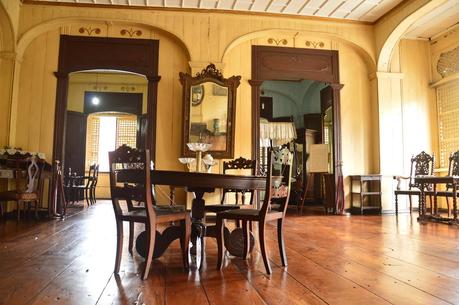 I visited the house of Marcela Agoncillo, the woman who is known to us all as the person who made the first and official flag of the first Philippine Republic.
I visited the house of Marcela Agoncillo, the woman who is known to us all as the person who made the first and official flag of the first Philippine Republic.Ideally, that's a good start.
A group of teens entered the Marcela Agoncillo Historical Landmark and upon seeing the statue fashioned after Marcela sewing the flag, a visiting teenage girl squeaked: "the flag was made here?!" Examining the statue some more and glancing back at her companions she once again exclaimed: "the flag was made here?!" I exhaled heavily and silently exited the crime scene.
Nonetheless, the house is beautiful and the ambiance leaves you exclaiming questions that would (like the teenage girl) lead you back in time. It is located in the old, historical town of Taal, Batangas and open from Wednesday to Sunday from 8:30 A.M. to 4:30 P.M.
I took these photos, you be the judge.
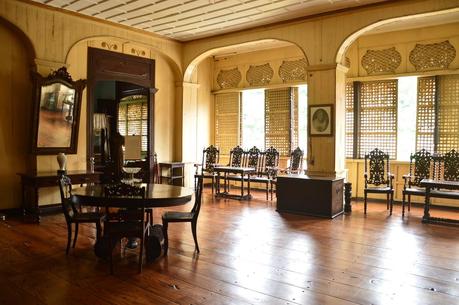
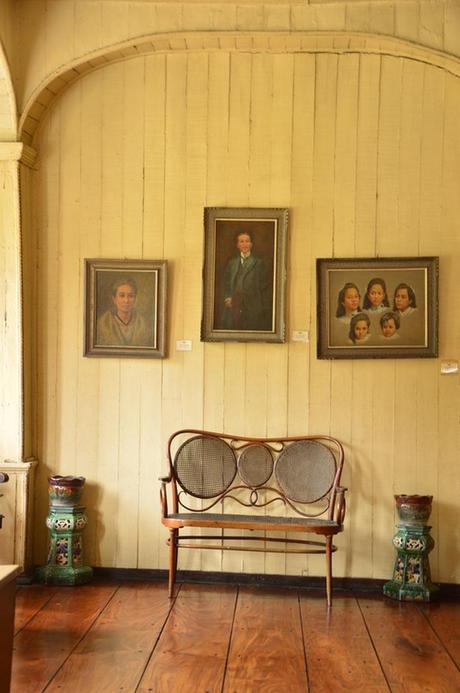 The Agoncillo family in Amorsolo portraits.
The Agoncillo family in Amorsolo portraits. 
 I might have been a little bit fixated on the living room...
I might have been a little bit fixated on the living room... 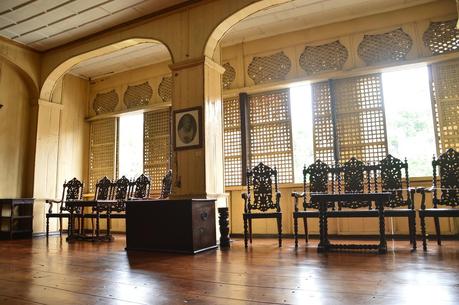 Who wouldn't?
Who wouldn't? 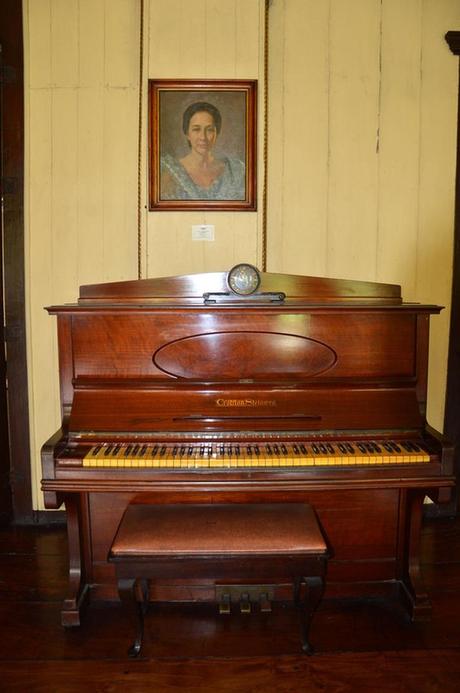
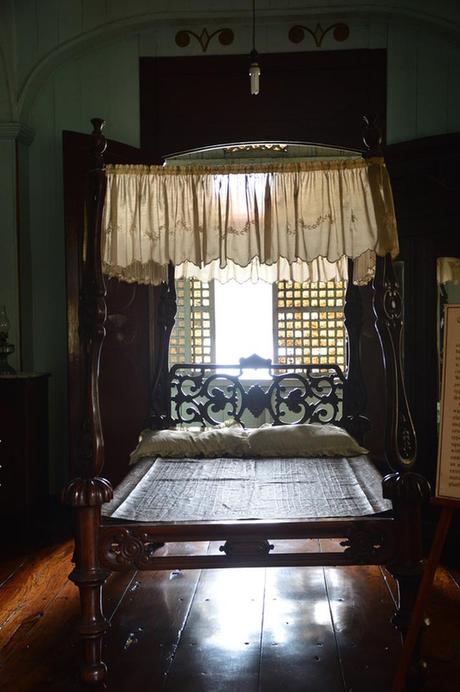
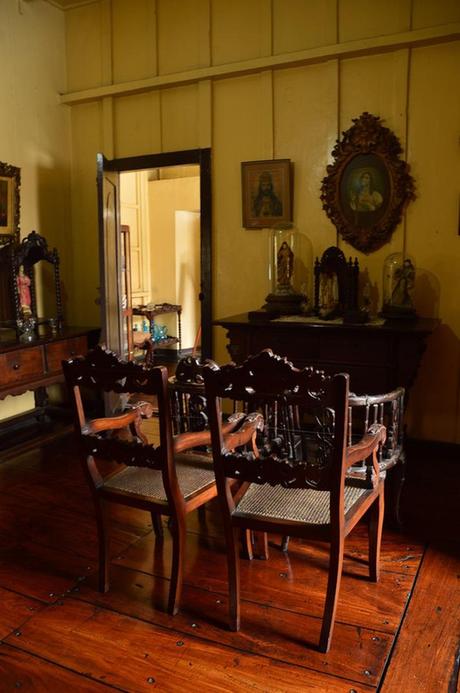
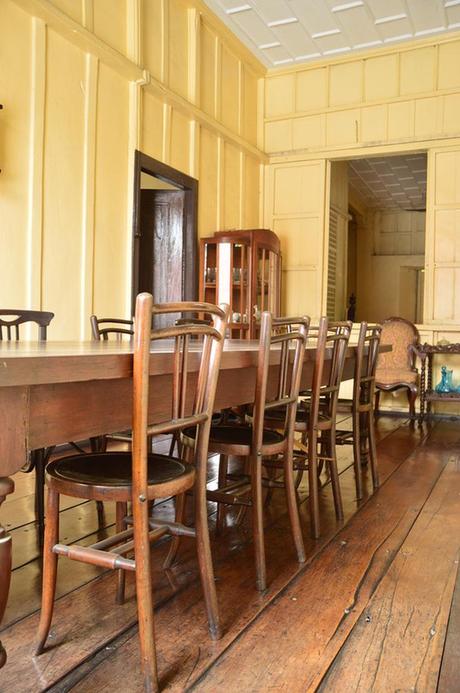
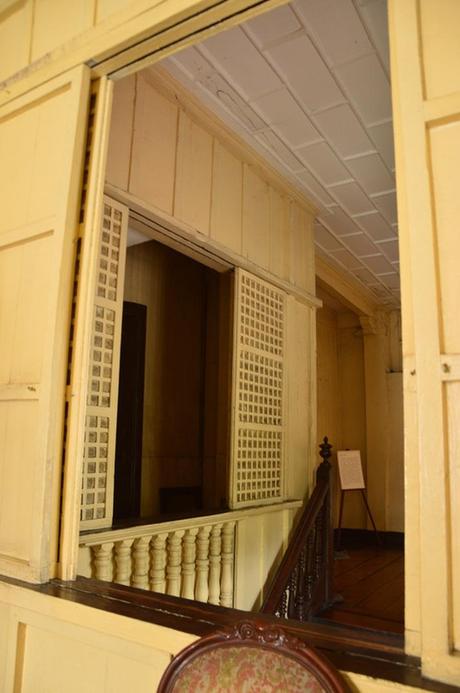

Sewing the Symbol of the Philippines
For five days in May 1898, from the nimble fingers of Marcela, assisted by Mrs. De Natividad and Lorenza, emerged the symbol of ideals and aspirations of the new Filipino nation.[1] The design of the flag—two solid fields, one blue and one red, held together by an equilateral white triangle with an eight-rayed sun and three stars—was created under the direction of Emilio Aguinaldo and the Junta.[2]General Emilio Aguinaldo, speaking before the revolutionary congress in Malolos provided an interpretation of the symbolisms in the design of the Philippine flag:
“Behold this banner with three colors, three stars and a sun, all of which have the following meaning: the red signifies the bravery of the Filipinos which is second to none, a color that was first used by the revolutionists of the province of Cavite on the 31st of August 1896, until peace reigned with the truce of Biak-na-Bato. The blue signifies that whoever will attempt to enslave the Filipinos will have to eradicate them first before they give way. The white signifies that the Filipinos are capable of self-government like other nations…
The three stars with five points signify the islands of Luzon, the Visayas, and Mindanao…And, lastly, the eight rays of the rising sun signify the eight provinces of Manila, Bulacan, Pampanga, Nueva Ecija, Morong, Laguna, Batangas and Cavite where martial law was declared. These are the provinces which give light to the Archipelago and dissipated the shadows that wrapped her… By the light of the sun, the Aetas, the Igorots, the Mangyans, and the Moslems are now descending from the mountains, and all of them I recognize as my brothers.”[3]
The flag was unfurled on May 28, 1898 at the Teatro Caviteño in Cavite Nuevo (now Cavite City) in celebration of the revolutionary army’s victory in the Battle of Alapan.[4] It was first used as Aguinaldo’s standard in the Battle of Alapan on May 28, 1898, the basis for the celebration of the National Flag Day.[5]
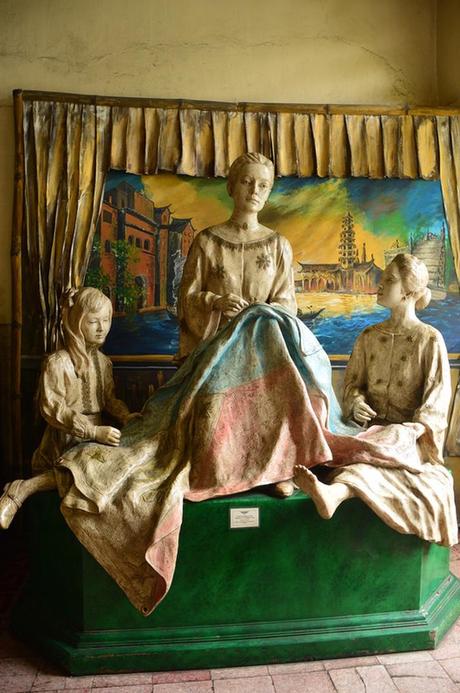 The statue of Marcela Agoncillo, her 7-year old daughter Lorenza, and Jose Rizal's niece, Delfina Herbosa Natividad. The three of them worked on the sewing of the first official Philippine flag of independence that was completed in 5 days.
The statue of Marcela Agoncillo, her 7-year old daughter Lorenza, and Jose Rizal's niece, Delfina Herbosa Natividad. The three of them worked on the sewing of the first official Philippine flag of independence that was completed in 5 days. References:
[1] http://nhcp.gov.ph/marcela-agoncillo-historical-landmark/
[2] http://nhcp.gov.ph/marcela-agoncillo-historical-landmark/
[3] http://www.philippinemasonry.org/icons-of-freedom.html
[4] http://nhcp.gov.ph/marcela-agoncillo-historical-landmark/
[5] 101 stories on the Philippine revolution, Ambeth Ocampo (2, 33)

